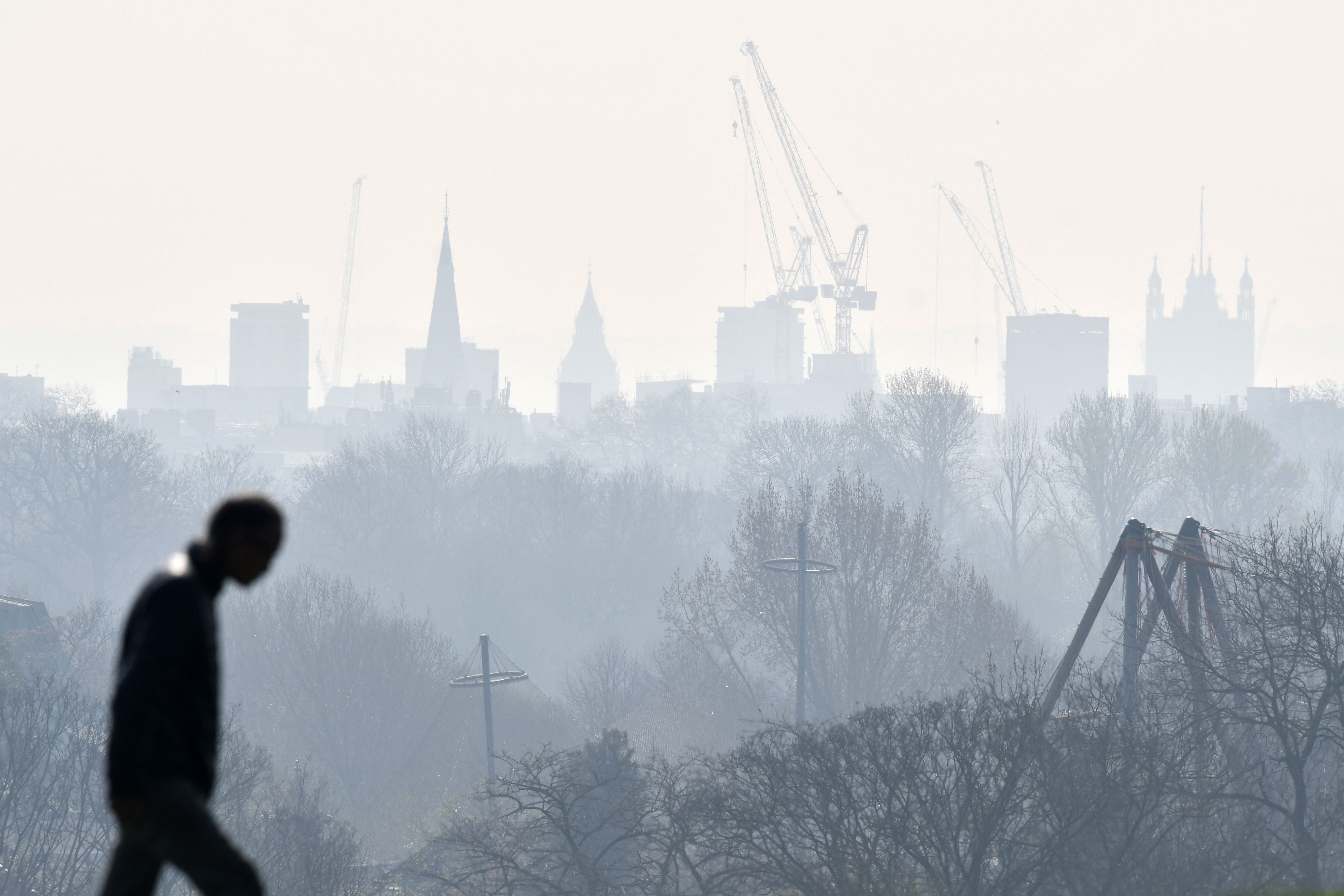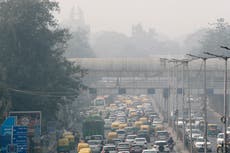Government not doing enough to hit 2030 air pollution targets, warns NAO
‘People’s health will suffer’ because government is ‘dragging its feet on tackling air quality,’ Labour MP says

The government is not on track to hit its targets for cutting air pollution by the end of the decade, according to the public spending watchdog.
Existing policy measures will not be enough to meet most of the government’s air quality targets by 2030, the National Audit Office (NAO) warns in its new report.
While air pollution has reduced over the decades, Britain has been in breach of legal limits for the pollutant nitrogen dioxide since 2010.
For this reason, the government does not expect to fully meet its goals until after 2030.
There are also concerns about the health impacts of fine particles known as particulate matter (PM2.5), with the government expected in the autumn to set a new legal target for reducing its presence in the air.
PM2.5 particles are able to travel into the lungs via the respiratory tract, which can cause health problems.
Pollution is linked to tens of thousands of early deaths a year in the UK from conditions such as heart disease and stroke. In children, it can cause reduced lung growth, respiratory infections, and aggravated asthma.
In its report, the NAO states that people cannot easily find out about air quality in their area. It is calling on the environment department (Defra) to make such information more accessible to the public.
It also said that the government is not communicating effectively on the need for solutions such as charging polluting vehicles to drive in areas that have been declared “clean air zones”.
Such zones have faced political and public opposition due to the rules and costs imposed on motorists.
Some local authorities have raised concerns about a lack of a national campaign which could inform road users about the need for rules that intend to help keep the air clean, the NAO said.
The watchdog called for the government to review its approach to engaging the public on clean air zones to ensure there is a good understanding across the country of what they are for, how they differ and how to check if vehicles are compliant and pay charges if necessary.
The report says that bringing in measures such as clean air zones can have a positive impact on air quality, with analysis from Bath and North East Somerset suggesting it’s helping to reduce the number of more polluting vehicles and improve air quality.
The NAO found that overall a programme to work with local authorities to tackle nitrogen dioxide pollution, which comes from sources such as traffic fumes, has progressed more slowly than expected.
Of 64 local authorities across England with potential breaches of nitrogen dioxide limits, 16 are already compliant and 14 have implemented all measures expected to bring pollution within legal limits, but seven have yet to agree on a full plan with the government.
Implementing measures is taking longer in many areas than expected, the report warned, and said the pandemic is not the only reason for the delay.
Gareth Davies, head of the NAO, said: “Government has made progress with tackling illegal levels of nitrogen dioxide air pollution, but not as fast as expected.
“There are also concerns about the health risks from particulate matter, which Government is finding challenging to tackle.
“To meet all its 2030 targets for major air pollutants, Government will need to develop robust solutions quickly.
“The public need clear information to understand why clean air measures are important and what the measures will mean in their area.
“Those living in the worst-affected areas ought to be able to find out when and how their air quality is likely to improve.”
In response to the report, Meg Hillier, Labour MP and chairwoman of the Public Accounts Committee (PAC), said: “Government is dragging its feet on tackling air quality and it’s people’s health that will suffer.
“The clock is ticking for the UK to meet its targets, and time to implement the new policy measures needed is rapidly draining away.”
She added: “Proper communication with the public has been sorely lacking. Publishing information that can’t be understood is like serving soup without a spoon – it’s pointless.
“Properly engaging with the public on air quality is vital so they can become part of the solution.”
A government spokesperson said: “We welcome the findings of the NAO report which rightly highlights the progress made by the Government whilst also recognising the challenges we face.
“Air pollution at a national level continues to reduce significantly, with nitrogen oxide levels down by 44 per cent and PM2.5 down 18 per cent since 2010.
“We have committed nearly £900m to tackle air pollution and improve public health. We have also setting stretching and ambitious targets on air quality through our world leading Environment Act, with a live public consultation showing our ongoing desire to engage with the public on this crucial issue.”
Additional reporting by PA
Join our commenting forum
Join thought-provoking conversations, follow other Independent readers and see their replies
Comments


Bookmark popover
Removed from bookmarks